Mystic, Connecticut, is a coastal town—highly-trafficked each summer, decidedly sleepy during winter months. It’s perhaps best known for giving a young Julia Roberts silver screen employment as a pizza-slinger back in the ‘80s, complete with a wild, can’t-believe-she-got-away-with-it coif and cutoff jeans. It’s famous among locals—very much a real business, very much a bustling one on the day I’m in town. But I’m not here for pop culture-celebrated slices of pie or some film school field trip. I’m here for the clams.
I’m at the Sea Swirl, a seaside shack on the Atlantic coast that ominously leans on this early spring afternoon, beneath a tenuous sickle of almost there sunlight carved from the four o’clock cloud cover. Although it’s early in the season, families accept comfortable places at iconic burnished picnic tables, Coca-Cola cups and plastic cafeteria trays between them.
Alongside orders of french fries and corn fritters, portion cups of condiments are paraded into polychromatic palettes; they’re primed for decorating hot dogs and bringing dabs of color to crab cake rolls on soft, toasty split top buns—the same ones that struggle to support lobster claws that look as if they could reach out and shake my hand. The still-unavoidable overcoats are the only indication that we’re lingering in less-than-ideal temperatures, and dangling above the walk-up window is a wooden sign: Famous for Clams. I don’t need the placard to ply me, though; I’ve been sold by a far more reliable source.
I grew up not far from here, but somehow the Sea Swirl escaped my sonar until the recommendation came during an interview with Mark Rosati, Shake Shack’s culinary director. When the man who makes one of America’s favorite burgers tells you to try something, you don’t ask questions—and so I made the early spring pilgrimage at his behest. “I highly recommend the foot-long hot dog and whole belly fried clams,” he tells me via Instagram message, when I send him a snap of the Swirl’s opening announcement for the season. Each swallow of briny, battered clam is a distillate of the nearby sea, and the satisfyingly dense soft serve ice cream calls up consummate memories of my own summertime scenes.

Rosati is an expert at converting memories into meals, and vice versa. His varied experiences have provided him a robust recollection of flavors to revisit and pull from—and of course, to recommend. Earlier this year, during two separate conversations with Rosati on opposite sides of the country, we discuss Shake Shack’s development process (which he helms in his current role). We talk about burgers and sauces and build outs, and the complexity of scaling concepts internationally. There are stories shared about Rosati’s culinary journey, and what led the Connecticut native to the head of the company’s exponentially successful kitchen, and subsequently around the world.
But I’m also treated to a mental inventory of restaurants and food spots from the mind of an authentically enthusiastic, self-proclaimed “restaurant geek.” Speaking with Rosati is like having a conversation with a walking, talking Where Chefs Eat. Today, Rosati spends a good deal of his time on the road, and thanks to his work scouting locations (more than 90 Shake Shacks and counting in his purview), he’s become a compendium of culinary destinations across the globe.
As a culinary professional, Rosati is analytical, exacting, meticulous. But when we meet back in January in Los Angeles when the West Hollywood Shake Shack was in its pre-opening phase, he’s all smiles. He had his hands full with Roadside Doubles which he distributed liberally, high on the opportunity to share his team’s latest creations. In conversation, Rosati was winsome and relaxed, just as easily moving between inquires into the secrets of his own menus to celebrating the ones he’s most enjoyed in different cities, and one thing was instantly evident: this guy is more than an informed and studied chef; he’s a true food fan.
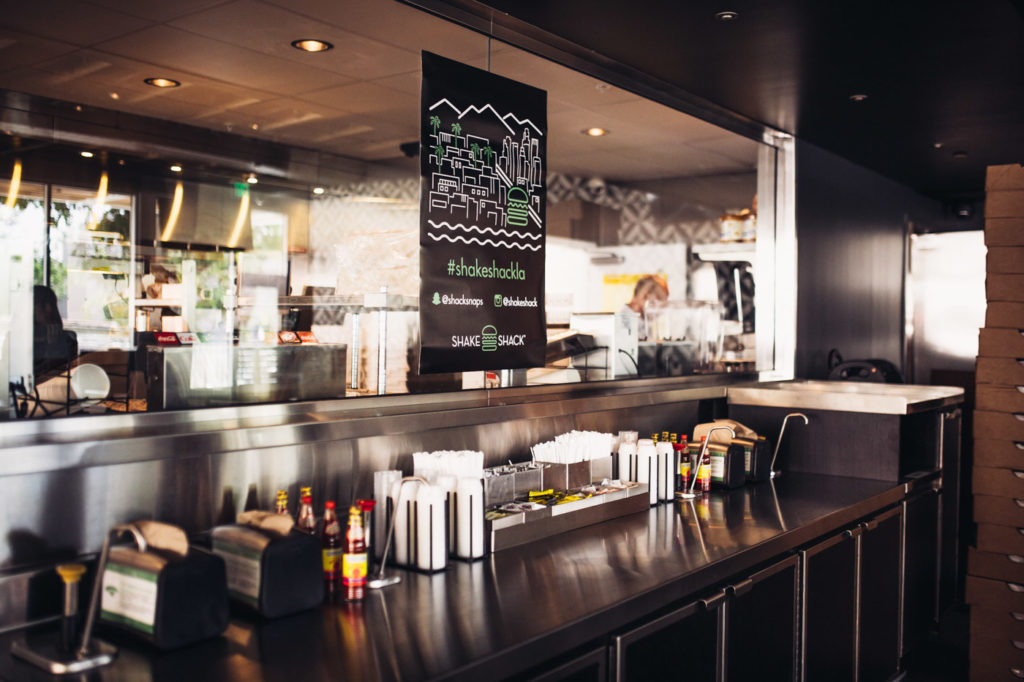
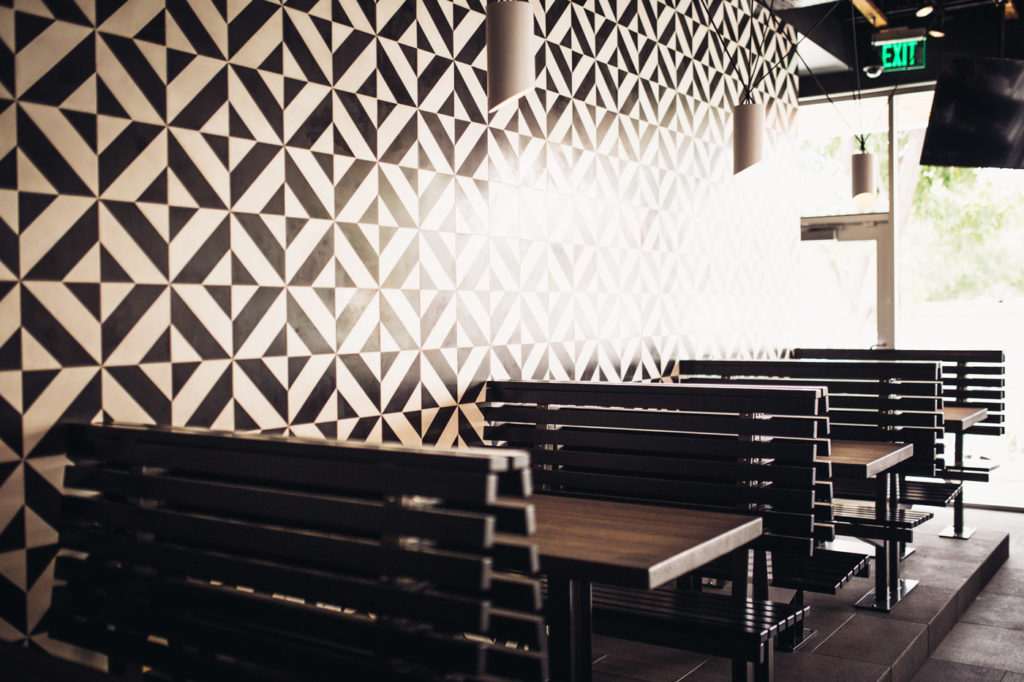

——
Rosati’s suggestions for my seaside lunch are well-researched; he was also raised near the Sea Swirl. “Right on this inlet from the ocean,” he tells me a few weeks before my Mystic visit, in a very different setting—an office overlooking Manhattan’s Union Square, where Shake Shack is headquartered. I jump all over the coincidence, over-aggressively pointing out our parallel provenance. Here, taxi horns and sirens replace the rush of the Atlantic, but the feeling of that New England shack resonates in Rosati’s culinary philosophy.
“[There are] a lot of summertime lobster shacks there, so the idea of a shack—I know that concept,” he tells me, leaning forward over the conference table between us. Although a familiar conceit, it wasn’t one he necessarily saw in his future. In fact, the food business wasn’t in the plan at all when he eventually relocated to New York City; Rosati was enrolled in film school. “I was really into the process of it,” he says.
Film work, however, wasn’t particularly abundant, and he found himself turning to the kitchen. “I was a budding foodie,” he says. “I would read Village Voice and New York Magazine to find out about new restaurants.” Rosati’s attention to the city’s restaurant scene was also process-focused—equal parts analysis and enjoyment. “I became obsessed with how a restaurant where I pay, say, $19 or $20 for a chicken tasted so much better than the one I was making at home. I’d find out where [restaurants] were getting their chickens, and then I would buy that chicken and cook it; and it still didn’t taste right,” he says, with a sense of mild frustration in the flashback.
But he continued experimenting, narrowing his focus. “I could go to the market and buy a bunch of vegetables and burn them and over-season them and try to figure out how to do it. I started watching a lot of cooking shows and buying a lot of cookbooks,” he says. Given Rosati’s level of expertise today, these stories seem like outtakes from a series long since canceled.
A volume he was particularly fond of, Think Like a Chef, was written by the chef, Tom Colicchio, of one of Rosati’s favorite restaurants. “Instead of giving recipes, he was trying to give theory,” Rosati says with an obvious appreciation for that effort. At the time, Colicchio was helming Danny Meyer’s famed Gramercy Tavern. “I just loved Gramercy Tavern,” he recalls. “I couldn’t afford to go there often, but when I did, it was a special occasion.”
He may not have been a guest in the dining room as often as he’d have liked, but Rosati soon found himself face to face with the folks behind the swinging kitchen doors. A friend working in the restaurant industry invited Rosati to a food and wine event, where he made his way straight for the Gramercy Tavern table. “I just start gushing—‘How do you cook your chicken? And how do you braise that lamb shank? It’s amazing!’” Rosati vividly storyboards the event from memory, with Colicchio and chef de cuisine Jon Schafer playing two down-to-earth culinary heroes.
“I think they got a kick out of me,” Rosati laughs. The chefs extended an informal invitation for Rosati to come to the kitchen and observe, which he wasted no time accepting. He left with Schafer’s card, and on the very next day he made the call.
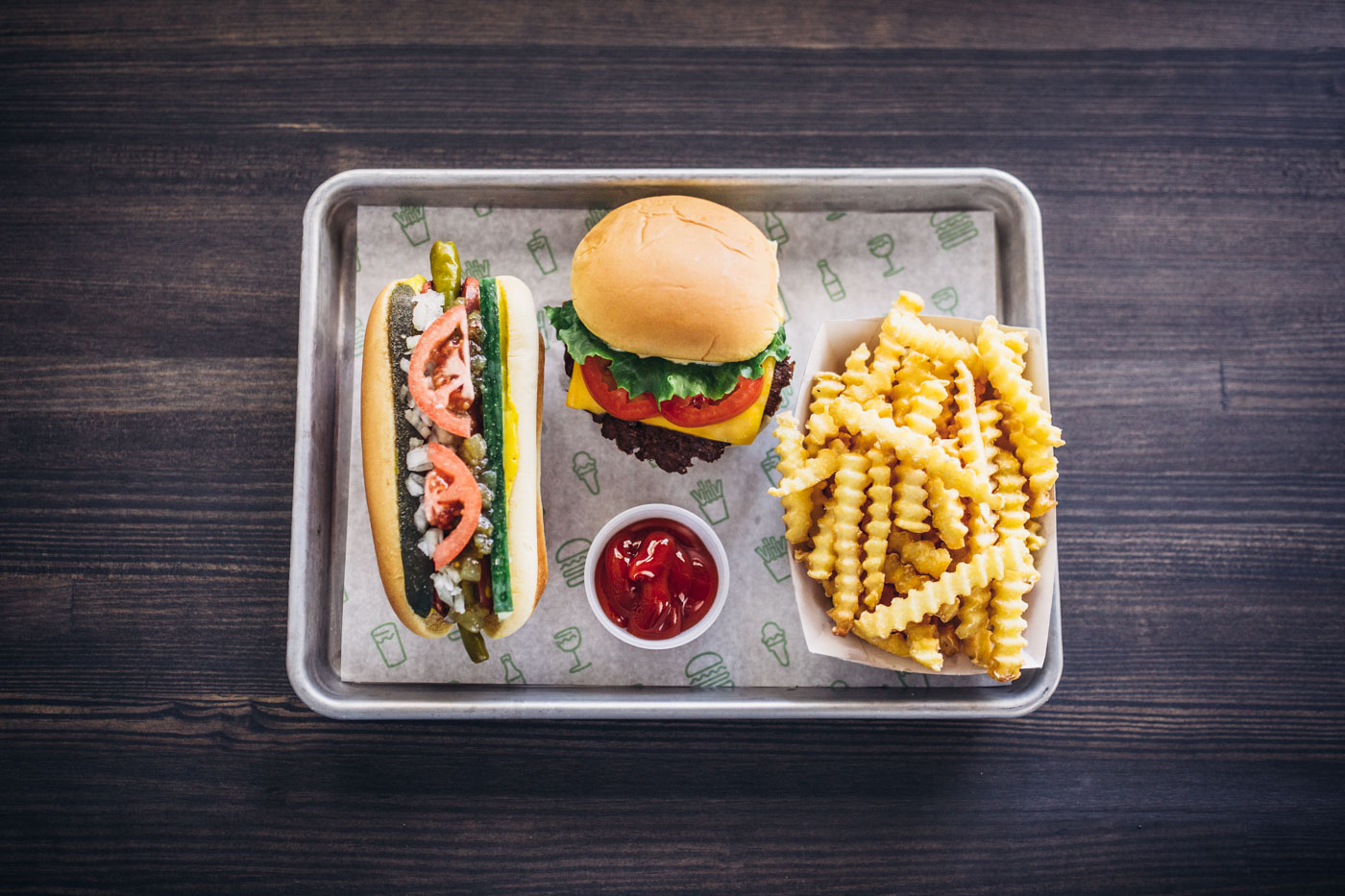
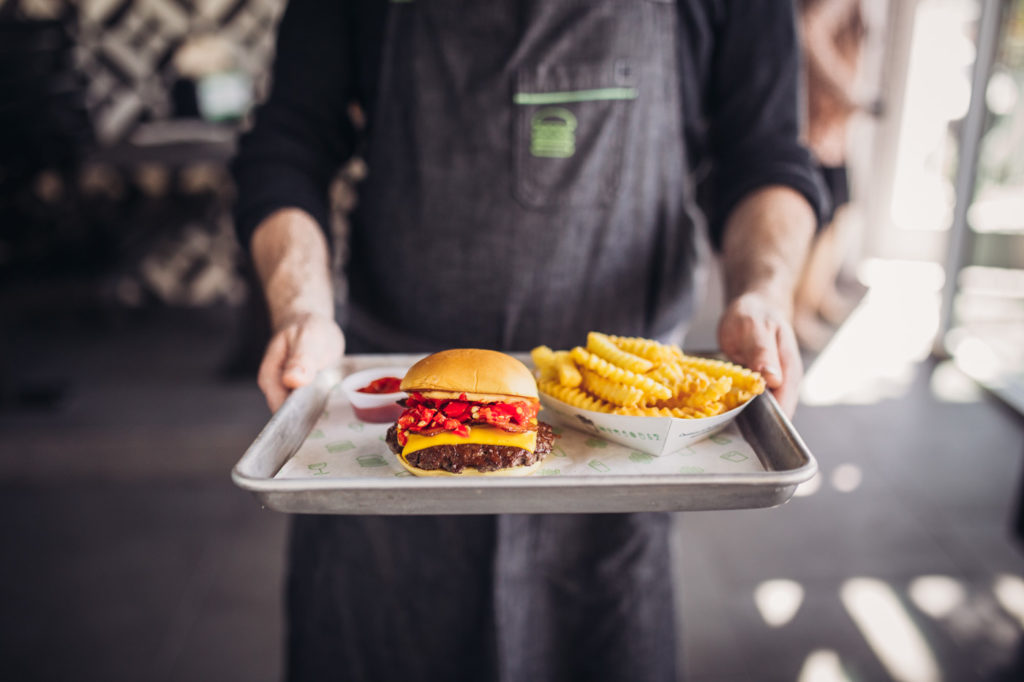
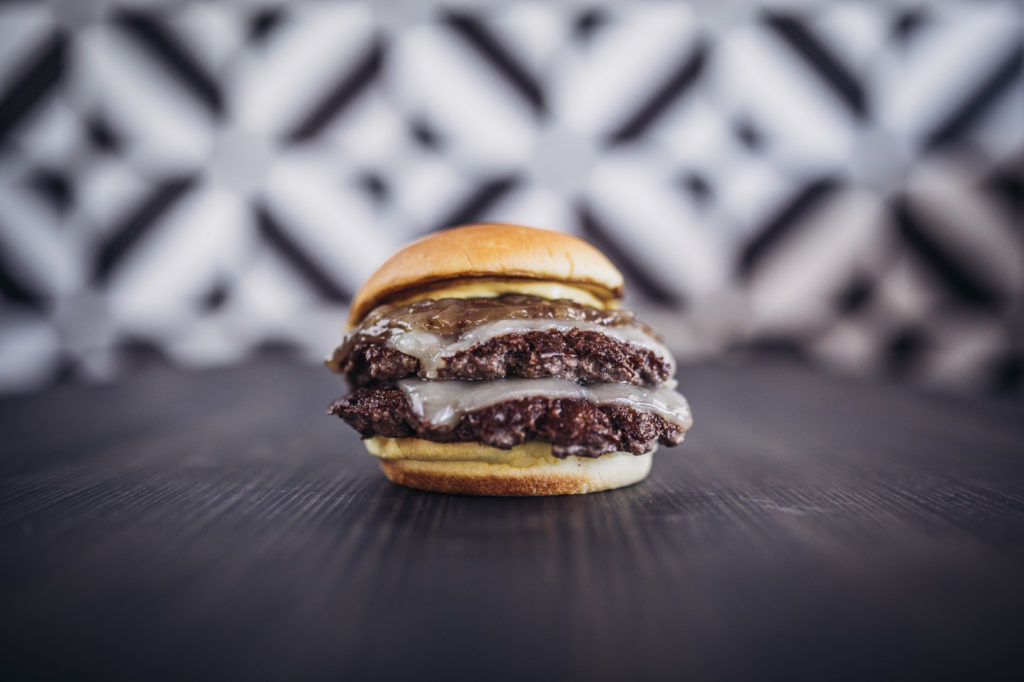
Rosati soon found himself on a very hot set, his fine dining daydream finally come to life. “They let me see all the different stations in the kitchen,” he remembers. “I saw the gentleman roasting meat, and he pulled this piece of sirloin out of the oven that was perfectly caramelized—threw it in thyme and garlic and started basting with foaming butter.” This is when I make a mental note to arrange dinner reservations, while Rosati continues, looking as if the sensory reaction to his recollection hasn’t dulled at all despite the years since. “The smells of all those ingredients—I was gawking at this guy.”
It’s a brief but illustrative clip, and it feels as if it could serve as the trailer for Rosati’s culinary future. He was hooked, immediately arranging a return. “I was like, ‘I’ll cut carrots, I’ll do whatever you want. Just let me work with the chefs and the cooks and hang out,’” he smiles at his younger self; it was intense work, but it suited his evolving interests.
“That’s when I really started to say, ‘I think I can do this, I want to do this,’” he says, his palms flat on the table in emphasis. Rosati was sold, but he needed to prove his conviction to the company’s kitchen. “I told them I wanted to be part of the team, and they kind of laughed at me,” he remembers. “I was like, ‘I can do this. Give me the chance!’”
Eventually a permanent position was offered to Rosati, by which point, film held little sway compared to the compelling culinary world. “I really didn’t think too much about film and television; this door had opened up in one of the best restaurants in New York City, and I’m somehow working with these guys with no culinary experience,” he says.
Rosati’s culinary conditioning continued within the restaurant’s celebrated walls, but eventually, Rosati felt the professional itch to advance. And although prepared for his next act, he still felt committed to Union Square Hospitality Group (of which Gramercy Tavern was a part)—he just wasn’t quite sure in what capacity. “I was actually on the fence about what I wanted to do with my career; I never wanted to be a chef. And so I thought, I can keep cooking, or maybe I can learn front of house. Maybe management,” he remembers. But only one option in the company had the opportunity he was in search of: a young concept called Shake Shack.
Rosati questioned whether it’d be a step forward coming from a fine dining restaurant, but he agreed to a mind- and life-changing trial shift. “I was completely in love with it. I got to smash some burgers, spin some milkshakes. I was having fun,” he smiles; it seems as if he still can’t quite believe just how much fun. Memories of the Sea Swirl surfaced: “I thought back to when I was younger, going to a seafood shack where I grew up in the summertime and drinking a milkshake. This looked like the same shack, just a little different.” To this part, I can attest. But beyond the food, it was function that Rosati appreciated. “If I got an A on my report card, or my soccer game went really well, my parents would take me there to celebrate. I would go and see my friends and it was the thing to do. It really brought people together,” he says. “The whole idea of a gathering spot for the community—I know how special that can be.” The nostalgia was compelling. The shift was beyond convincing. And shortly after, the job was his.
Management was indeed his original charge, but the natural-born food fan couldn’t shake an inherent culinary inclination. “I couldn’t get my head out of the kitchen. At first I was like, my job is not to mess with this stuff; it’s just to make it.” But Rosati recalls observing processes and learning recipes, and then gently encouraging changes: “I know we’re doing this, but I feel like if I was doing the same recipe at Gramercy, I’d probably blend this first and then add this ingredient because of this.” This type of analysis and evaluation is reminiscent of that pre-professional home cook who was compelled to understand every dish.
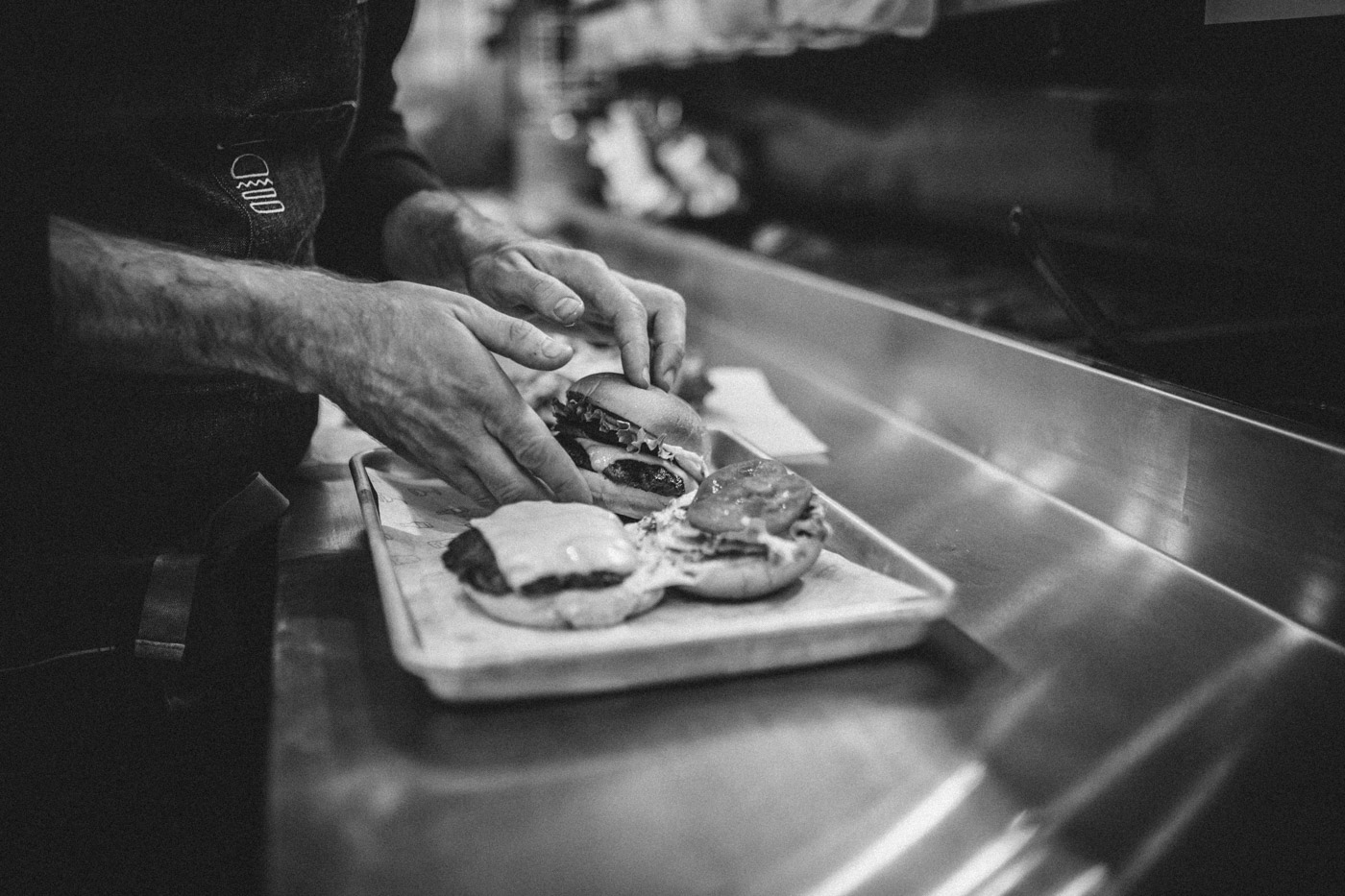


In one clip called up from Rosati’s memory, Shake Shack CEO Randy Garutti had a particular gripe with Shacksauce that inspired the young chef to take a gamble. “[Randy] was like, ‘I feel like there’s a lot of garlic in this—a lot of garlic.’ After a while I said, ‘You know what I’m going to do one day?” He pauses with a cocked, conspiratorial smile. “I’m going to change this recipe just a slight bit, to start to bring balance to it.”
Rosati was ready to take some unsanctioned risks, but he was hardly cavalier. “I took it seriously, and it took a long time to get it right,” he tells me. When he was finally satisfied, he shared his new spin with Garutti, whose positive response was a turning point. After successfully tackling Shacksauce, Rosati felt encouraged to further experiment, examining the menu through the lens of a fine dining cook.
At the time, Shake Shack was a new company and his current role had not yet been created. “There was no one there at the time really taking hold of the culinary reins of the company,” Rosati says. In tweaking recipes and gradually evolving many of the menu’s mainstay items, Rosati was establishing what would be his long-term legacy and livelihood.
Subtle as the changes were, super-fans of Shake Shack were critical to please; and Rosati knew he couldn’t leave any classic, identifying characteristics on the cutting room floor. “It took me a while to be comfortable,” he says. “Shake Shack was so loved by so many people, I still didn’t want to take liberties.”
While some are intensely passionate about the details right down to the ratio of tomato to lettuce or butter to toasted bun, Rosati believes in Shake Shack’s broader appeal as being integral to its blockbuster success. “There’s something about the simplicity of our food that is universal,” he says. And like any director worth his Shacksauce, Rosati prefers to keep the behind-the-scenes clips confidential. In Shake Shack’s case, that means the thoughtful consideration that goes into constructing and selecting each element, so customers can enjoy their meals effortlessly. “We would never want to let people understand really how much work it takes to make great food.”
Today, the company’s main menus are dialed-in and well-tested, but Rosati still has opportunities to exercise his inner food nerd. In advance of an opening, he visits an intended location to explore what’s being created within each community’s food world. Ultimately, a handful of local items make their way into the Shake Shack offerings, often in the form of concrete mix-ins or local beer and wine. They’re discoveries that energize the chef, and they help ensure Shake Shack stays in touch with the vernacular of its environment—that those visiting to, say, celebrate an A+ report card can recognize some of their own neighbors’ work on the menu board.

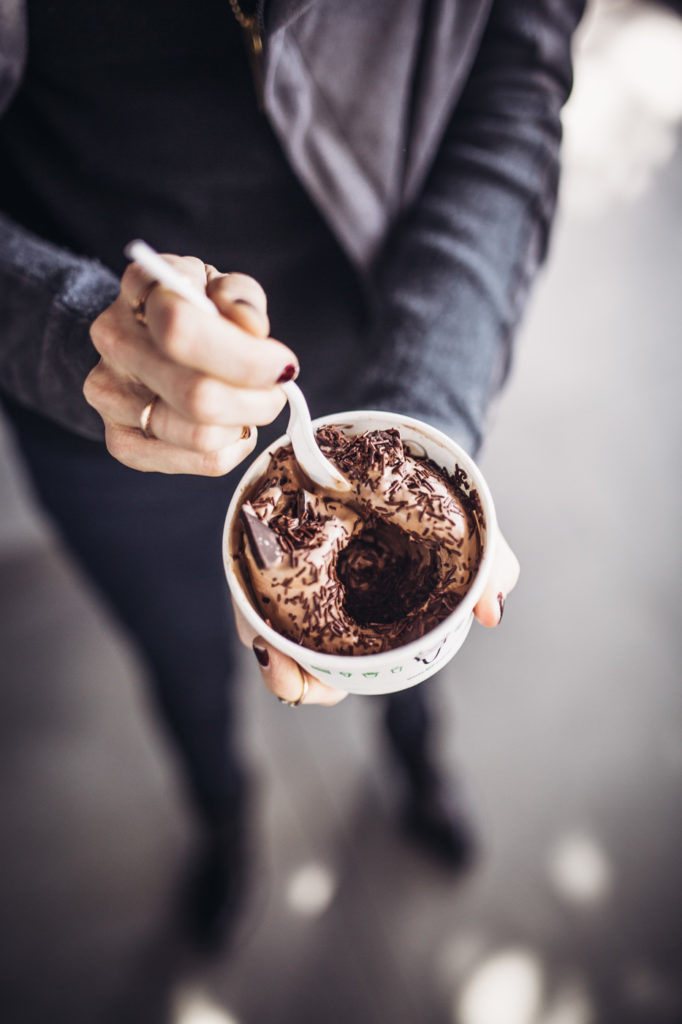
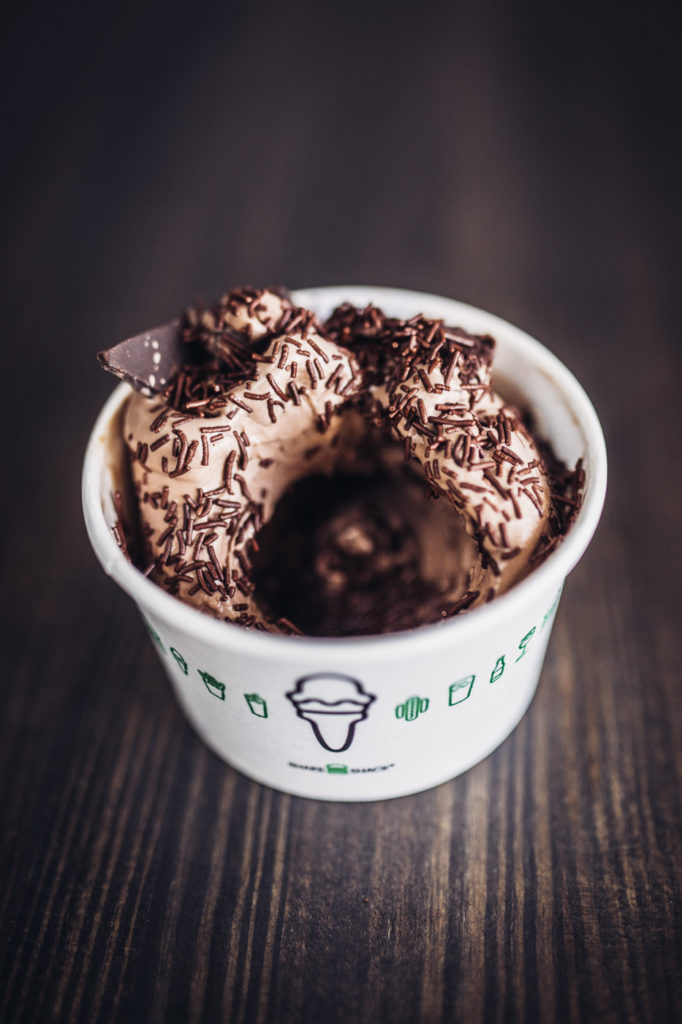
——
Whether or not Rosati will consider substituting his culinary adventures for cinematic alternatives, time will tell. But recently, his job led him to Tinseltown anyway. On a West Hollywood winter afternoon for the pre-launch party of Shake Shack’s first California location, he’s out of the desk chair and on his feet, in his element in a Shackburger-branded apron. “You’ve got to try this,” he tells me, pausing to open a cardboard pastry box packed with densely fudgey brownies, each one irrigated generously with salted caramel, sourced from James Beard award-winning chef Suzanne Goin’s Larder Baking Company. The brownies will later be made bite-sized and spun into signature concretes.
“I’m a big restaurant geek at heart,” Rosati says, retrieving two potato rolls from the dozens fated for Shackburger fans that will line up around the block in just a few hours. With the assured hand of an inventor, he effortlessly crafts a couple of burgers for us to photograph that he now could no doubt assemble in his sleep. It’s a deftness and comfort that probably would have awed the film school version of himself, the hobbyist experimenting with unfamiliar kitchen techniques.
Later on as a part of the launch, the company hosted an outdoor “drive-in” movie (Star Wars, bringing happiness to my own geek heart), and as Rosati passed around burgers to guests he’d clearly come to regard as friends, he chatted about places in town he was excited to visit, he asked about their favorites. “To talk to other people in this business and hear their passion or learn something new or a different way of thinking about food that I never thought of myself—that’s so exciting to me today.”
Rosati remembers yesterday, too. Shake Shack’s appreciation for nostalgia is a signature character, fortified by the clear vision of a director with a firm grasp on food scenes—modern and classic, homegrown and global, fine dining and “fine casual.” From the Atlantic beachfront to the Pacific coast, the present day Rosati brings an expansive depth of knowledge to his incidental field of vision.
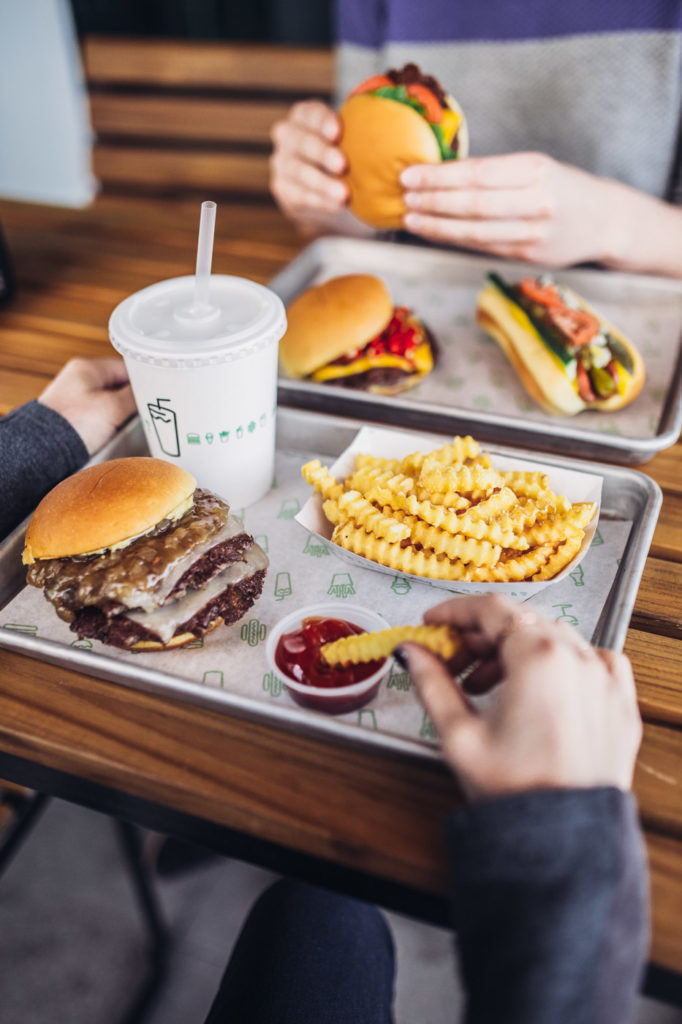
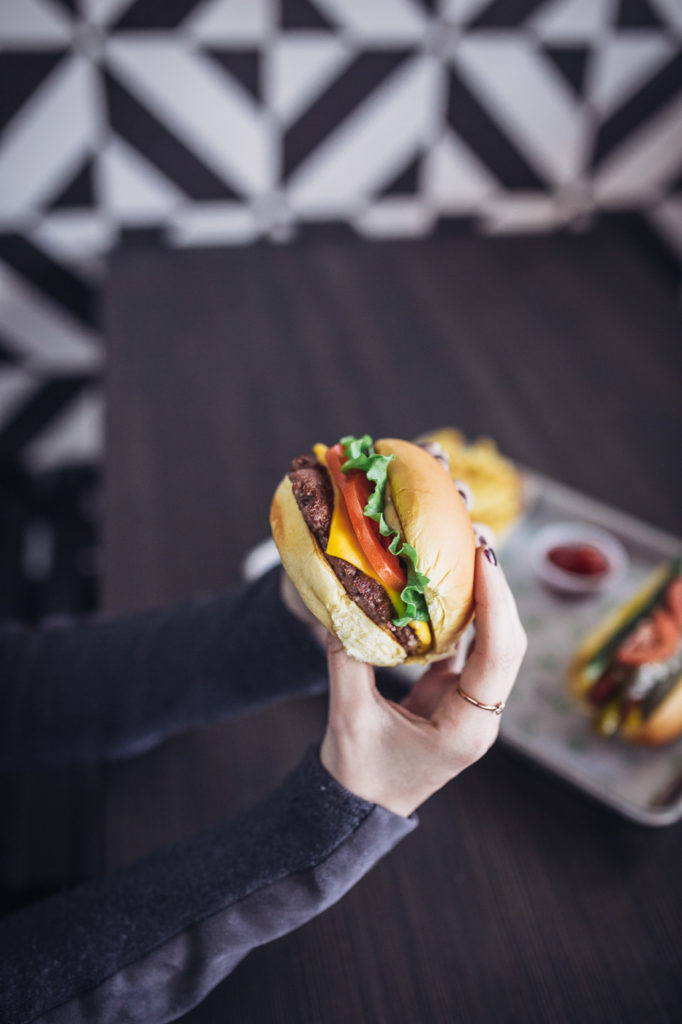
Back at the Sea Swirl, it occurs to me there is now a Shake Shack along my return route, in New Haven. It seems only appropriate to follow a meal at one shack with another. As I adjust the destination in my GPS and pull onto Mystic’s main roads, I wonder for a moment what a career in film might have looked like for Rosati. Perhaps he’d have joined Julia Roberts in bringing claim to film fame to his coastal town. But I get the feeling that Shake Shack fans are simply grateful he’s chosen an alternate ending.
——
Shake Shack
8520 Santa Monica Blvd, West Hollywood, CA 90069





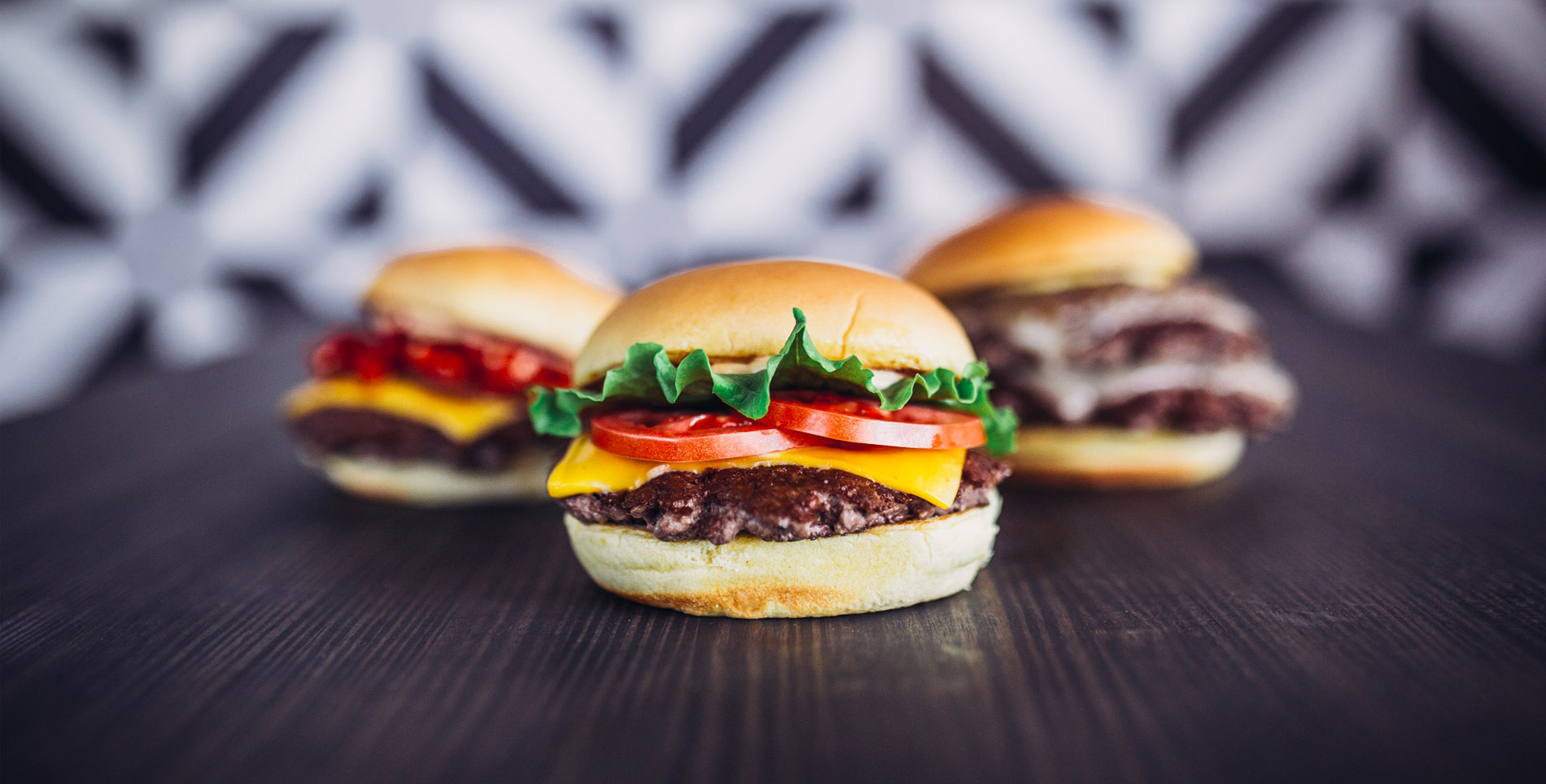

Our comments section is for members only.
Join today to gain exclusive access.